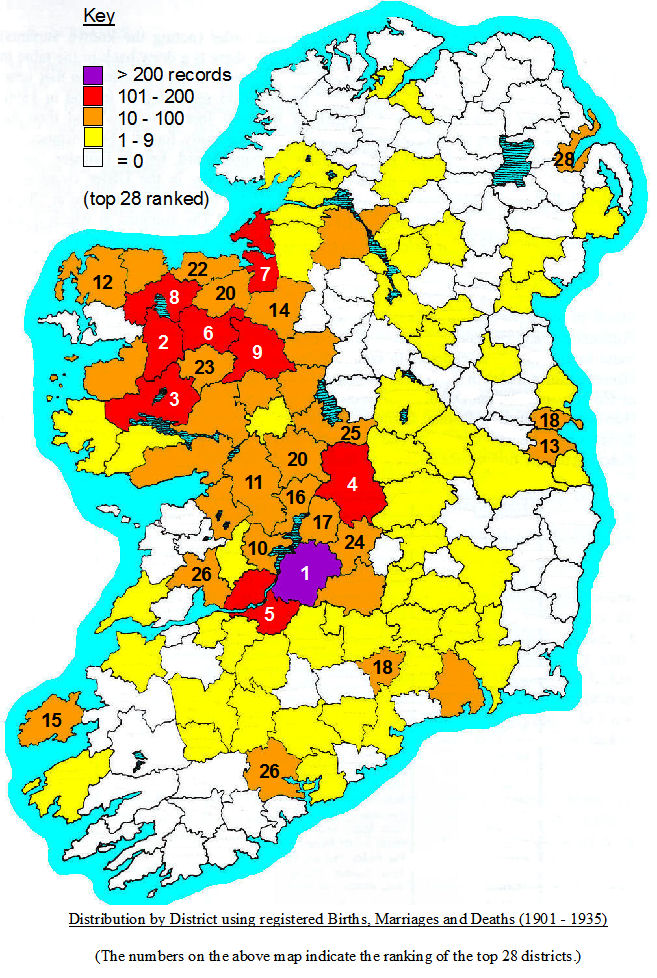Twentieth Century
The Civil Registers for 1901 to 1935 (inclusive) contain a total of 1,352 Births, 603 Marriages and 922 Deaths; making a grand total of 2,877 recorded events in 98 districts (91 Registration Districts in Ireland and 7 Foreign Districts). This tally includes all recognised variant spellings for the surnames Flannery and Flannelly, and no distinction has been made between the two surnames since they were commonly interchangeable in some parts of the country (most notably North Connaught). The tally may also include a couple of duplications (marked *) where the same event appears to have been recorded twice using different spellings. All events for each district have been summed and then expressed as a percentage of the grand total, and all of this summary data is presented in a colour coded table below.
The top 10 districts (in descending order) are Nenagh, Castlebar, Ballinrobe, Birr, Limerick, Swineford, Sligo, Ballina, Castlereagh and Scarriff. Dublin would be ranked 7th if Dublin North and Dublin South were merged.
70 districts individually returned less than 1% of the grand total, and are coded blue in the table and left unranked. 28 districts jointly returned 86% of the grand total and are individually ranked to indicate their relative significance. The top 10 districts collectively returned 54% of the grand total and are coded yellow, the remaining 18 ranked districts are coded white. The colour coded map (below) shows the top 28 ranked districts.

It must be highlighted that the cut-off figure of 1% was arbitrarily selected for this analysis and has no intrinsic significance. It is worth noting that 1.18% scored by Belfast only marginally exceeds 0.94% scored by Galway.
The analysis of distribution using events recorded in the Civil Registers (1901 - 1935) may not be a perfectly accurate guide because poorer rural areas are thought to have been less meticulous in their compliance with the requirement to register. On that basis, the analysis should probably be studied in tandem with the distributions suggested by the earlier Civil Registers (1845/64 - 1901), as well as the Tithe Applotment Books and Griffith's Primary Valuation.
The following colour coded table is intended to assist individuals tracing ancestors when they have very little background information. In general terms, there is a rather slim chance they hailed from one of the 70 blue districts; a fifty-fifty chance they came from one of the 10 yellow districts; and a very high probability that they originated in one of the 28 ranked white or yellow districts.

It is strongly recommended that individuals also consider participating (directly or indirectly) in the Flannery Clan Y-DNA Project to help trace their ancestry.